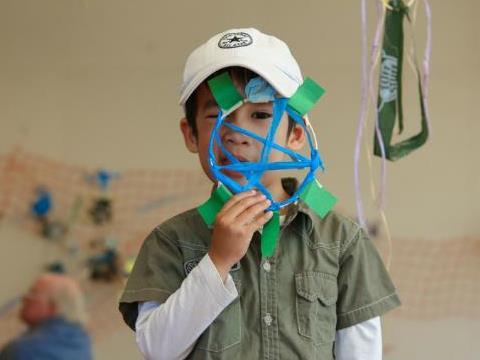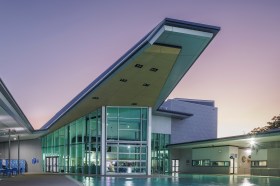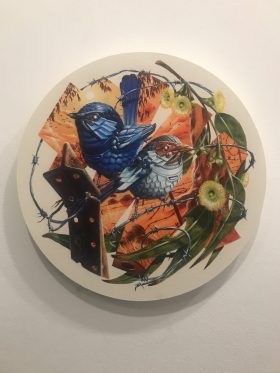Children’s learning at MCA’s dedicated centre NCCL. Courtesy MCA.
It was the 1980s when innovative exhibitions for children began to emerge in science centres like Canberra’s Questacon, with the growth of hands-on learning. At the time most major Australian museums, galleries and libraries did not have permanent designated spaces or exhibitions for children.
Three decades later and our art museums are leading the way with dynamic and layered programming from tours, to activity-based programs, to interactive and virtual portals. At the heart of all is a blend of hands-on activity and technology, but are we getting the balance right?
In this two-part series, ArtsHub speaks with the Queensland Art Gallery/Gallery of Modern Art (QAGOMA) and Museum of Contemporary Art Australia (MCA) about the shifting culture of Kids Programming. This week, we’ll look at what’s driving these programs and audiences – is it indeed expanded access through technology or is it hands-on activities that nurture the creative souls of our kids?
It is apparent that art museums are striving to connect with a younger technology driven audience, blatantly aware of the pace of change and a culture concerned with access, engagement and outreach, buzzwords that drive funding. Making contemporary art accessible sits central to programming decisions.
So do you get kids today into the gallery?
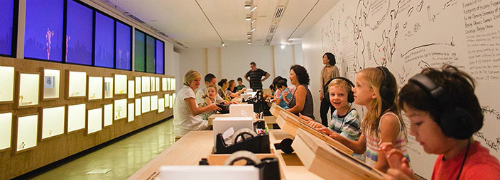
Cai’s projects for GOMAs Children’s Art Centre
We have to remember that this next generation – what I am grouping as school-aged children and younger – have never know a world without technology. Donna McColm, Head of Public Programs, Children’s Art Centre and Membership at QAGOMA, said, ‘It is just so natural for kids these day.’
She continued, ‘How much info you need to put on the touch screen interactives to guide them is very little because they just know what to do. Even where we thought that something might be too hard, it is really quite clear it is so intuitive for kids.’
Today’s engagement with young audiences, however, is more than just downloading an app or interactive wall label. In an online report prepared by Janette Griffin and Leon Paroissien Understanding Museums: Australian museums and museology (2011), Griffin states: ‘The key message for program developers is that children will respond cognitively, aesthetically, motivationally, and collaboratively to a diversity of objects and exhibit elements incorporated in the museum experiences in different ways. Thus, exposing children to a wide range of experiences will have wide ranging impacts on children’s learning in museum settings.’
I posed the question to McColm: ‘How are they tailoring their programs at QAGOMAs Children’s Art Centre (CAC) to accommodate this mix and what do people want more of?’
‘What we are finding with doing new things with technology is that they are really engaging people of all ages, not just children, and yet on the flipside something as simple as a hands-on making activity is still really strong,’ said McColm.
‘Drawing is always popular and people will be drawn to that. There is something about it that is eternal, like our Matisse drawing room in 2011 embedded within the exhibition or Cai’s Eucalyptus drawing activity. If you give people a place where they feel they are not judged they will get in and have a go.’ It has become a family activity.
McColm added, ‘It’s really comforting that it is not just going all tech-based.’
Cai Guo-Qiang was one of the first artists commissioned by the gallery to make a work with its Kids APT in 1999. Fifteen years later, for his current exhibition children can create spectacular multimedia gunpowder drawings and explosion events, make and display objects in miniature gallery spaces, draw Cai’s eucalyptus, and watch a short animation on Cai’s projects.
It is a similar immersion that we can find across most of our major galleries, just this summer at Gold of the Incas at the National Gallery of Australia children can immerse themselves in the ancient Peruvain way of life in their Family Activity Room within the exhibition; National Gallery Victoria has their Melbourne Now Children’s Festival: Digital goes Art, and the Art Gallery of New South Wales for example have their GalleryKids program extending works through performance, storytelling and interactives.
The MCA sways slightly more toward the use of technology than QAGOMA, choosing different paths of engagement. Heather Robertson, Assistant Director Audiences and Creative Learning explained, ‘The NCCL (National Centre for Creative Learning) provides unique spaces to extend exploration and engagement with contemporary art in ways that are not possible within the gallery environment.’
‘This includes a unique digital infrastructure within the NCCL which enables us to seamlessly engage with schools throughout Australia (and the world) through video conferencing, connecting our audiences directly with contemporary artists and artworks,’ said Robertson.
Like the CAC at GOMA, the NCCL’s digital studio is fast gaining a reputation in leading the way in enhancing learning possibilities. Robertson said the dynamic facilities allow the MCA to deliver workshops and hands-on experience which utilise digital tools and techniques to explore new media art-making processes.
While technology is ever-available to us at ever-cheaper prices, these programs have not followed suit. They are costly both in terms of staffing, time and implementation. The tech team not only run, but also develop unique and interactive programs for temporary and collection exhibitions, which is vital to their success.
McColm said, ‘We do a lot of trialing with children as we are working out the concepts for the activities. Watching a child do the project helps to inform all sorts of things – logistically is it going to work, is it sustainable over time, are they engaged or bored – lots of staff go out to local schools and that informs every step of the way, so by the end it is tried and tested.’
‘We have some amazing staff here harnessing technology to help support contemporary artist’s idea. You see that with Cai’s gunpower drawings and the explosion events where something virtually impossible for kids to do becomes possible, and also enhances the core idea what the work is about.’
But it is not only technology that is an expensive outlay. Hands-on activities also have their challenges, constant invigilation for one.
‘That is a huge cost and an invisible cost to a lot of people, but we will not compromise on that,’ said McColm. ‘Our “activity assistants” are fully trained and briefed on the exhibition. It is their role to make the connection for families who might be coming to the museum for the first time though the CAC, so they have a hugely important role. They also give us invaluable feedback.’
The MCAs Bella Program for students with specific needs centres around the sensory experience of making workshops and interactive installations created by artists. It is led by specially trained MCA Artist Educators.
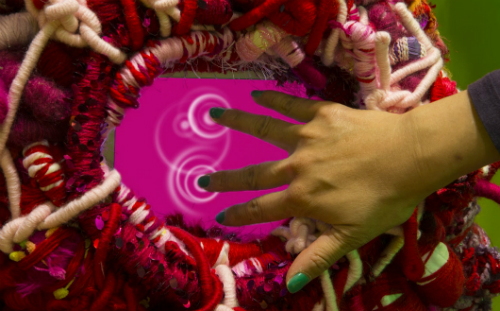
Detail of Hiromi Tango’s interactive installation for MCAs Bella Room
McColm agreed, ‘We have worked with over 170 artists to create works [since first Kids APT in 1999]. Talking to them ancedotely the decision for them to become an artist was spurred by an experience they usually had as a child where they were exposed to art through someone or a moment – we are hoping that is happening here.’
The street is two-way. Through an artist’s participation in children’s commissions their own practice is then a little more cogniscant of the museum experience.
While there are many reasons why contemporary children’s programming is a success, it is only going to continue to surge forward with continued innovation. ‘Some hypothesise that the first generation of cultural consumers from the late 1980s and early 1990s are now parents taking their children to a range of exhibitions, events and performances. Others speculate that children and young people are democratising culture as they generate new creative practices and engage in a rich cultural life’, summarises Griffin.
No doubt these will be issues discussed at forthcoming conferences this year, including The National Visual Art Education Conference held at NGA (21-23 January), Regional & Public Galleries NSW 2014 Conference (NSW, February), Museum Australia National Conference MA14 (Tasmania, May), and The 17th Triennial ICOM Conference (Melbourne, September).
